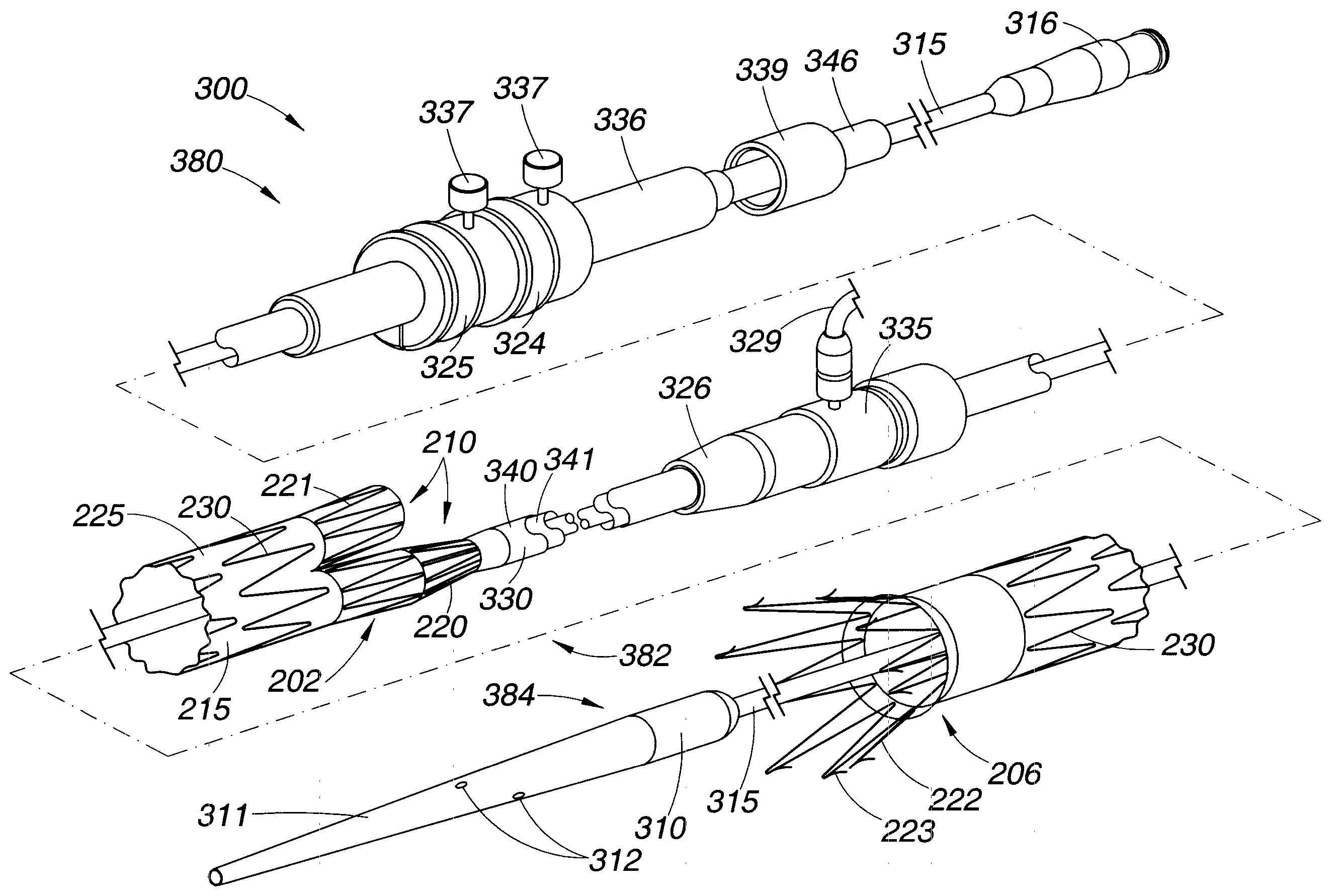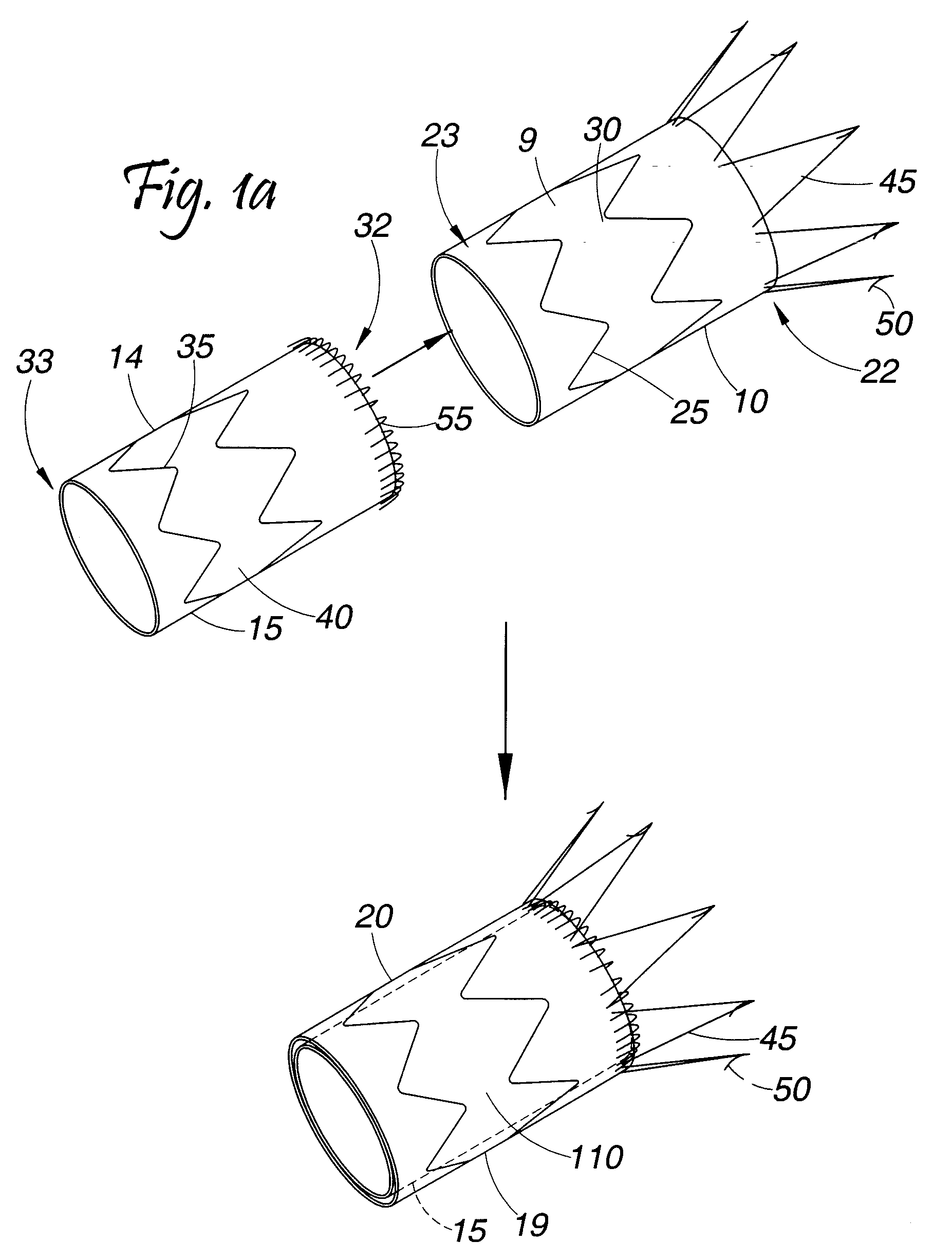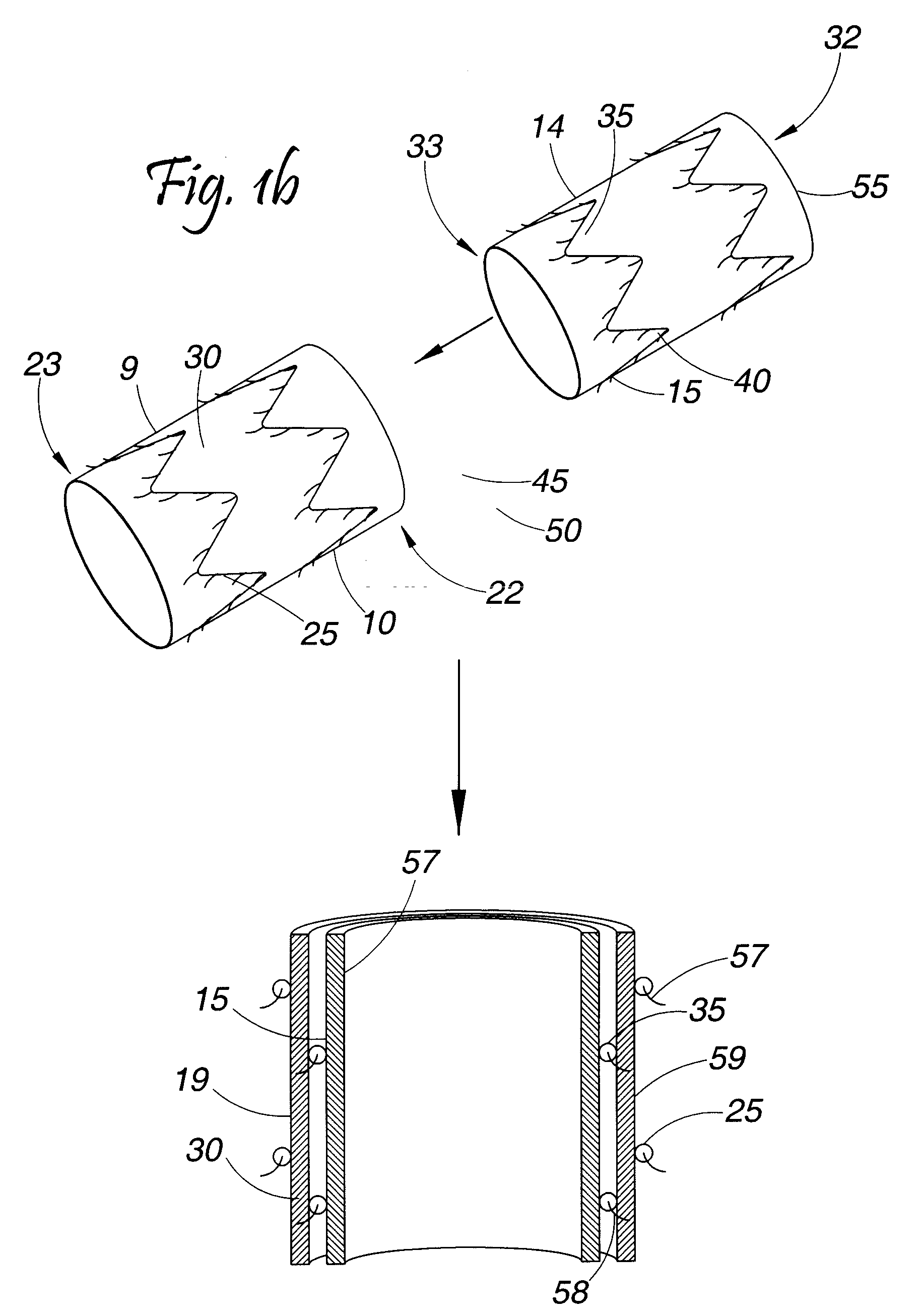Composite Stent Graft
a stent and stent technology, applied in the field of composite prosthesis, can solve the problems of blood vessel and duct function, sometimes weakening or even breaking, aneurysms and dissections, etc., and achieve the effect of high compression for delivery
- Summary
- Abstract
- Description
- Claims
- Application Information
AI Technical Summary
Benefits of technology
Problems solved by technology
Method used
Image
Examples
Embodiment Construction
[0026]The present invention relates to an endoluminal prosthesis that may be used, for example, to treat an aneurysm. Typically, treatment of an aneurysm focuses on preventing blood from flowing into an aneurysm, thereby decreasing the blood pressure that is present within the aneurysm. Treatment is sometimes achieved using a stent graft that is composed of a tubular graft material, which is impermeable to blood flow, in combination with at least one stent. A typical stent graft functions by securing the graft material to the patient's blood vessel before and after the aneurysm, such that it forms a seal against the interior surface of the patient's blood vessel at both of these locations, thus directing blood flow through the stent graft. These devices are generally introduced by a delivery catheter or introducer, where the delivery catheter contains a compressed configuration of the stent graft. After the delivery catheter is directed through the patient's blood vessel to the aneu...
PUM
 Login to view more
Login to view more Abstract
Description
Claims
Application Information
 Login to view more
Login to view more - R&D Engineer
- R&D Manager
- IP Professional
- Industry Leading Data Capabilities
- Powerful AI technology
- Patent DNA Extraction
Browse by: Latest US Patents, China's latest patents, Technical Efficacy Thesaurus, Application Domain, Technology Topic.
© 2024 PatSnap. All rights reserved.Legal|Privacy policy|Modern Slavery Act Transparency Statement|Sitemap



